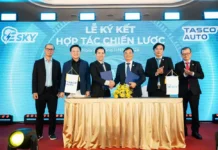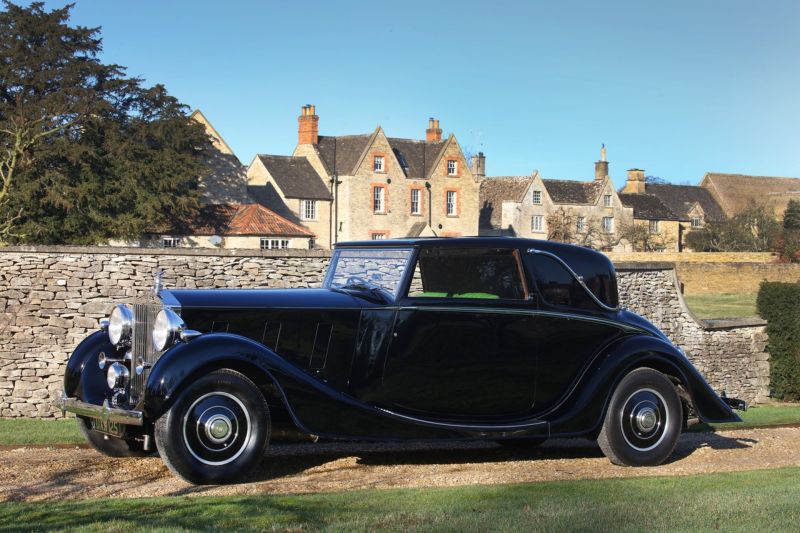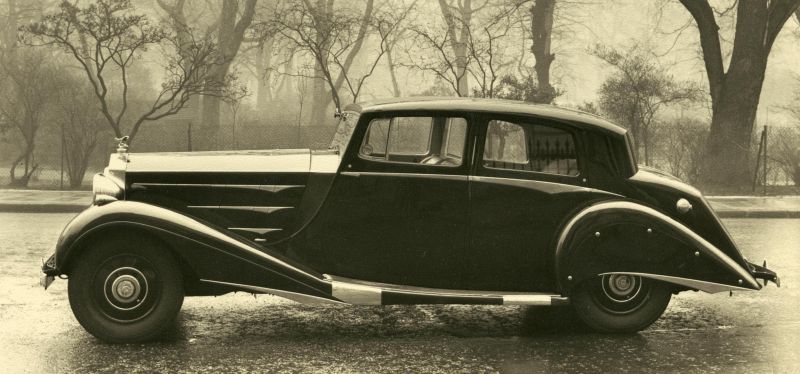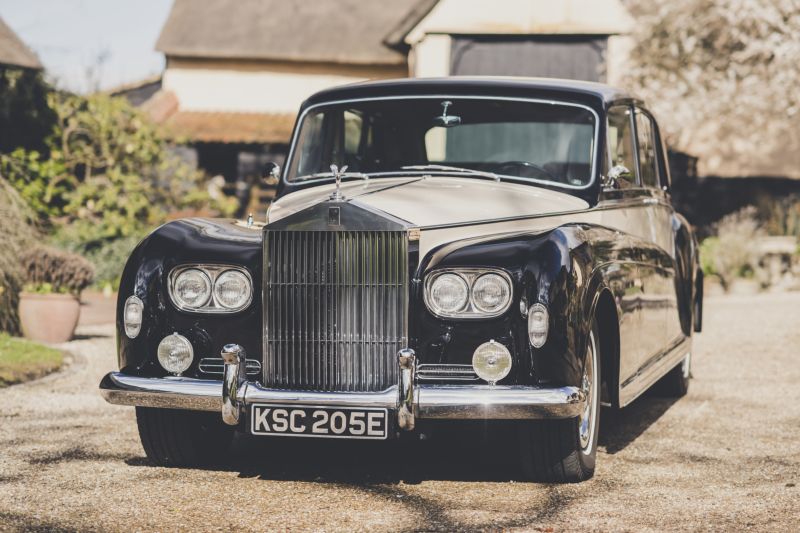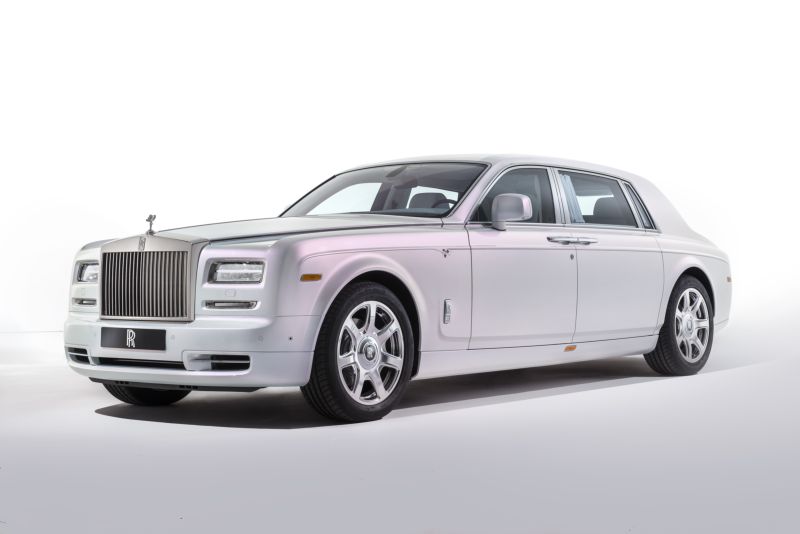Rolls-Royce Motor Cars marked another chapter in its long history with a celebration of the 118th anniversary of the first meeting between founders Henry Royce and Charles Stewart Rolls at the Midland Hotel in Manchester, England in 1904.
When reflecting on the immense heritage value of the Phantom, I am impressed by the unique position that the car holds in the hearts and minds of Rolls-Royce’s most discerning customers. The Phantom represents the epitome of Rolls-Royce Bespoke ambition, providing owners the opportunity to unleash their own creations. Truly, the Phantom is not only the ‘best car in the world’, but also the best car for the world of our customers.
Torsten Müller-Ötvös, CEO, Rolls-Royce Motor Cars
Following Royce – the engineering genius joining forces with Rolls – the business entrepreneur, their company was quickly recognized as the maker of ‘the best car in the world’; a title that Rolls-Royce Motor Cars still proudly holds over a century later.
Today, the brand’s flagship product – the Phantom – is a pinnacle statement of bespoke luxury, handcrafted at the Home of Rolls-Royce in Goodwood. As part of its annual series of events, where the company reflects on its origins and unique heritage, Rolls-Royce has looked back at the generations of Phantom, exploring how the nameplate has transformed over the years to maintain Rolls-Royce’s pinnacle position in luxury motoring.
THE ORIGIN OF SUPERIOR PERFORMANCE
In the early days of the automotive industry, luxury car manufacturers only produced the mechanical components (engine, transmission, chassis, etc.), also known as the rolling chassis – the platform for a motor car. The bodywork was then designed and built by independent coachbuilders according to the technical characteristics requested by the customer.
On the manufacturer’s side, including Rolls-Royce, improvements in design and engineering were mostly focused on the technical aspects of the car’s performance. These included durability and reliability, climbing ability, ease of handling, and a range of fundamental attributes that exemplify the quality of a car, including noise, vibration, and the structural dynamics of the body (NVH).
From the early days, the Phantom gained the title of ‘the best car in the world’ thanks to the high quality and superior design of the chassis – the best foundation on which coachbuilders could achieve the pinnacle of craftsmanship.
REDEFINING TECHNICAL LIMITS
The Phantom family was born in 1925 when Rolls-Royce launched the Phantom I model. With its maximum torque, advanced technology, and the ‘Magic Carpet Ride’ suspension system providing a smooth ride, the new car immediately established key features that would become characteristic of the succeeding generations over the next 100 years. However, just like the present day, Rolls-Royce did not rest on its laurels, and in 1929, the successor to the family was ready to hit the market.
The Phantom II represented another milestone in engineering and technological advancements. In 1930, the company introduced the Phantom II Continental, offering customers a more performance-oriented model for those who preferred to drive themselves. The ‘standard’ version with a longer wheelbase continued to be retained for chauffeur-driven experiences. This set a precedent for the Phantom and Phantom Extended models today.
DEMAND FOR SPEED
Although the new Continental model could reach speeds of up to 95mph, the car was still not as fast as some of its rival models. The company decided to find a comprehensive solution to this issue. In 1934, applying experience gained from testing aero engines, the company developed a new 7.3-liter V12 engine, mounted on a new chassis. The result was the Phantom III, which, when paired with a lightweight body, had a top speed that exceeded 100 km/h.
In 1939, Rolls-Royce produced a press car, nicknamed ‘The Scalded Cat’. In the years that followed, this car was often hired by influential figures, including His Royal Highness Prince Philip, the Duke of Edinburgh. The Duke was so impressed with the car that he convinced Rolls-Royce to build a more luxurious version for himself. The brand successfully fulfilled this task with the delivery of the first Phantom IV in July 1950. The car is still in active service at the Royal Mews, albeit reduced in intensity, under its nickname given prior to delivery – Maharajah. Although originally intended to be a one-off production, the company actually manufactured 18 Phantom IVs. Of these, 17 were made for other royal and heads of state figures; the remaining one had a peculiar origin, as it was built as a pickup truck for Rolls-Royce to use as a delivery vehicle and to conduct road tests.
THE LAST PROSPEROUS ERA
In 1959, the brand introduced the Phantom V generation, equipped with the most modern V8 engine in the lineup. In 1967, the car underwent subtle technical changes and, as a result, was renamed Phantom VI after its redesign.
By 1968, the only surviving genuine coachbuilder in the UK was Rolls-Royce’s in-house company, Mulliner Park Ward. These beautiful cars continued to be sold despite numerous difficulties in the 1980s until production gradually decreased to only two or three cars per year, and ultimately ceased altogether in 1992.
REALIZING DREAMS
Each generation up to the Phantom VI, in essence, used a rolling chassis. The bodies were custom-built to the owner’s specifications by some of the most renowned and reputable coachbuilders in the field of automotive design and craftsmanship in the UK and Europe.
While this was a common practice in the luxury car world, the Phantom stood out with its ability – thanks to Royce’s engineering expertise and the superior quality of its parts and chassis structure, this platform could support the highest quality, weight, and complexity of bodies.
At each stage of the Phantom’s development, owners maximized its potential, creating some of the most impressive, eye-catching, and advanced motor cars ever seen on the road. And because the chassis and body were separate, the next owner could change the appearance of the car to suit their preferences and needs.
Many Phantoms have worn more than one coat during their long lives, traversing the globe. Some cars were only repainted, but in other cases, the entire car was redesigned from the chassis up, reborn in a different form and with completely new characteristics. With all this extraordinary variety, the specific models enumerated below are veritable Rolls-Royces in terms of fundamental engineering, materials, construction, performance, quality, and the comfort of the driving experience, and, above all, fulfilling the precise desires of the owner.
Phantom II 1930 (62GY)
This beautiful Phantom II was coachbuilt by Hooper of London with a Dual Cowl Tourer body style. At the customer’s request, who was a wealthy timber merchant from Texas, 50 additional items were added to give the car a suitable appearance for touring purposes. These modifications included a larger petrol tank, a larger radiator cap, and a 2-inch raised hood louvers. The car was originally purchased for the customer’s honeymoon and later traveled extensively around the world until 1939. The current owner repurchased the car in 1998 and has since garnered prestigious awards including the Louis Vuitton Classic Parfums Givenchy Trophy for pre-war tourers and the Most Sporting Tourer at the Biarritz Concours.
Phantom II Continental 1933 (55MW)
This unique ‘boat-body’ design showcases the distinctive style of Park Ward, the premier coachbuilder. Its main feature is the compact folding top section, which can be completely concealed below the rear cowl when fully retracted, thereby creating a seamless line characteristic of the body. The original car had a raw pig-skin interior.
Source: ‘Park Ward The Innovative Coachbuilder’ by Malcolm Tucker.
Phantom III 1937 (3BT85)
This striking saloon-with-split rear body style, highlighted by distinctive v-shaped tail contours, is one of the eye-catching designs from London-based coachbuilder Hooper & Co. The chrome beltline trims are artistic decorations for the body and wheel arches that enhance the feeling of aerodynamics.
Source: ‘The Spectre Arises’ by Steve Stuckey.
Phantom V 1965 (5VD63)
This Phantom was originally owned by Squadron Leader Patrick Barthropp. In 1968, John Lennon bought the car from Barthropp around the same time The Beatles released the White Album. In September 1969, he sold the car to Allen Klein, an American businessman.
The car appeared in the Oscar-winning film – Georgy Girl (1966), the classic film Let It Be (1970) (featuring The Beatles), Performance (1970) (with Mick Jagger), and later had a prominent appearance in The Greek Tycoon (1978) (featuring Anthony Quinn).
In 2016, after an extensive renovation, Jody Klein, a longtime member of the Rolls-Royce Enthusiasts’ Club, took the car to the Concurs d’Elegance competition in Lincolnshire, where it was awarded first prize for “Best In Class”.
The car is currently located in the UK.
Source: Photo courtesy of ABKCO © 2022. All rights reserved.
Phantom VI 1966 (5LVF65)
James Young, established in 1863, is renowned for creating some of the most elegant bodies ever to grace a motor car chassis. Perhaps their peak achievement was realized in the development of the PV23 design, specifically developed for the Rolls-Royce Phantom V chassis. A total of 22 bodies of this kind were built.
This particular model was finished with a predominantly darker coat, but for the 5LVF65, a lighter tone of Ivorine paint was utilized for a unique exterior appearance that emphasizes the classic elegance of every line and form from the pen of renowned designer A. F. McNeil.
The interior features an exceptionally spacious rear cabin, with a well-crafted cocktail cabinet located below a strip of separating glass. Instead of the supple, high-resilience leather sheeting of similar shade and feel commonly preferred by drivers, champagne fabric was selected to adorn the rear cabin, providing greater comfort for passengers.
Source: P&A Wood.
Phantom VII 2015 (Serenity Phantom)
This magnificent Phantom VII Extended was created for display at the 2015 Geneva Motor Show. Inspired by the luxury cars produced for royalty around the world in the early 1900s, the rear cabin was finished with a unique Smoke Green-colored raw silk, handwoven and adorned with embroidered Chinoiserie floral patterns and hand-painted with a process that took 600 man-hours to complete. This design also appears on the dashboard, inlays on doors, and engravings. The wooden details of smoked cherry and bamboo, as well as decorative elements reminiscent of the image of a rush-covered stone in Japanese gardens, create an atmosphere of tranquility and natural breath in the interior. At the time this car was crafted, the overlying Cullinan paintwork used for the exterior design was the most complex and costly paint layer the brand had ever produced.
Phantom VIII 2021 (Phantom Oribe)
A unique collaboration witnessed two iconic brands, Rolls-Royce and Hermès, join forces to create a one-of-a-kind Bespoke Phantom for Japanese entrepreneur Yusaku Maezawa. Named the Phantom Oribe, the car features a combination of Bespoke colorways for its exterior, inspired by the unique Oribe pottery collection of ancient Japan, that reflects the global status of the car’s owner – Oribe ceramics. With this creation, Rolls-Royce has extended its special favor by providing the same Bespoke paint color for Maezawa’s personal private jet’s exterior.
The interior is predominantly finished in Hermès Enea Green leather. The Gallery display space delivers an artwork based on the design of renowned French illustrator and artist Pierre Péron (1905–1988), known for creating several iconic Hermès scarves.
A REBIRTH OF AN ICON
At 00:01 on 1 January 2003, the first Phantom VII was handed over to a new owner. This was also the first car produced at the new Home of Rolls-Royce in Goodwood, West Sussex, England. It was the embodiment of a completely modern interpretation of the brand’s characteristic lines and proportions, as the original philosophy set by Mr. Henry Royce himself. The process of crafting the car was entirely carried out in-house by a team of skilled craftsmen. Furthermore, the brand’s Bespoke program also offers opportunities for customers to realize their visions and individual desires on the canvas of the Phantom.
Throughout its 13-year-long life, the Phantom VII reaffirmed Rolls-Royce’s position as the world’s leading manufacturer of luxury cars, while maintaining its role as the brand’s pinnacle product. But, like its predecessors, Rolls-Royce designers and engineers understood that perfection is a goal without end: there was still no limit to the car’s superiority.
In 2016, Rolls-Royce unveiled the Phantom VIII. This was the first Rolls-Royce to be built on the brand’s exclusive Architecture of Luxury platform. It is an all-aluminum spaceframe designed to underpin every motor car produced at Goodwood in the future.
The Phantom VIII was explicitly designed to become the fundamental platform for Bespoke orders. The result has been some of the brand’s most ambitious and technically challenging projects carried out by its professional designers, engineers, and craftsmen. It is also the only Rolls-Royce model with The Gallery display space – separated by a long pane of glass running the full width of the dashboard, creating an environment where customers can display an artwork or commissioned design.
Nong Phuong (Tuoitrethudo)





